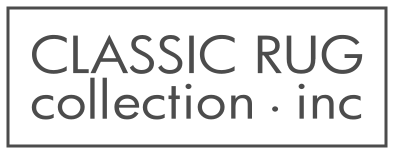Made of the Wright Stuff
Designs were inspired by Wright’s ceiling motifs, windows, perforated wooden panels, concrete blocks, and geometric drawings
NEW YORK—The work of iconic architect Frank Lloyd Wright has been reinterpreted in a new rug collection from Barbara Barran through an agreement with the Frank Lloyd Wright Foundation
.The last rug collection with the architect was in the 1950s with Karastan, said Barran, the president of Classic Rug Collection Inc. (Wright died in 1959.)Barran wanted the collection to evoke the architect’s spirit but make it appropriate for today’s homes. Working with Wright’s popular and brightly colored Saguaro drawing, for example, Barran took a section of it, recolored it, and added an irregular border and square shapes for one of the new designs.
The David Wright rug in the Signature Series
When one sees it, they think “Oh yeah, that’s Frank Lloyd Wright,’ but he didn’t design it, he inspired it,” Barran told HFN. “That was my goal, to make it for modern living.” Barran drew from Wright’s work, including motifs for ceilings, windows, perforated wooden panels, concrete blocks, and geometric drawings. The Saguaro design is in the new collection’s Signature Series, comprised of hand knotted rugs from Nepal and hand tufted rugs from Thailand; it will target architects and designers. In a 100-per-square-inch knot, the hand knotted rugs are made in a Goodweave-approved facility. The 6-by-9 David Wright rug design is more than $9,100.The moderately priced Usonian lines, named after Wright’s series of affordable homes, will feature U.S.-made floor cloths and cotton, handwoven flatweaves made in India, and be sold at Wright venues and museum stores and through catalogs. The floor cloths are offered in six patterns, many derived from Wright’s window designs.
The Pettit flat weave design
In the flatweave collection, two of the patterns are derived from a petroglyph whose shape had deep resonance for Wright, who thought the symbol looked like clasping hands; the Whirling Arrow became the symbol most closely associated with Taliesin West, Wright’s summer home and architecture school. The flatweaves are in a 3-by-5 size and will retail for less than $200 each. Through her agreement with the foundation, Barran can work with any Wright design, as well as customize the designs, sizes, and colors. “I can do that because my primary business is doing one-of-a-kind rugs,” said Barran. “This is my 21st year doing rugs. This is what you do when you do a doctorate in Shakespeare at Columbia—and your advisor dies just as you finish.”



